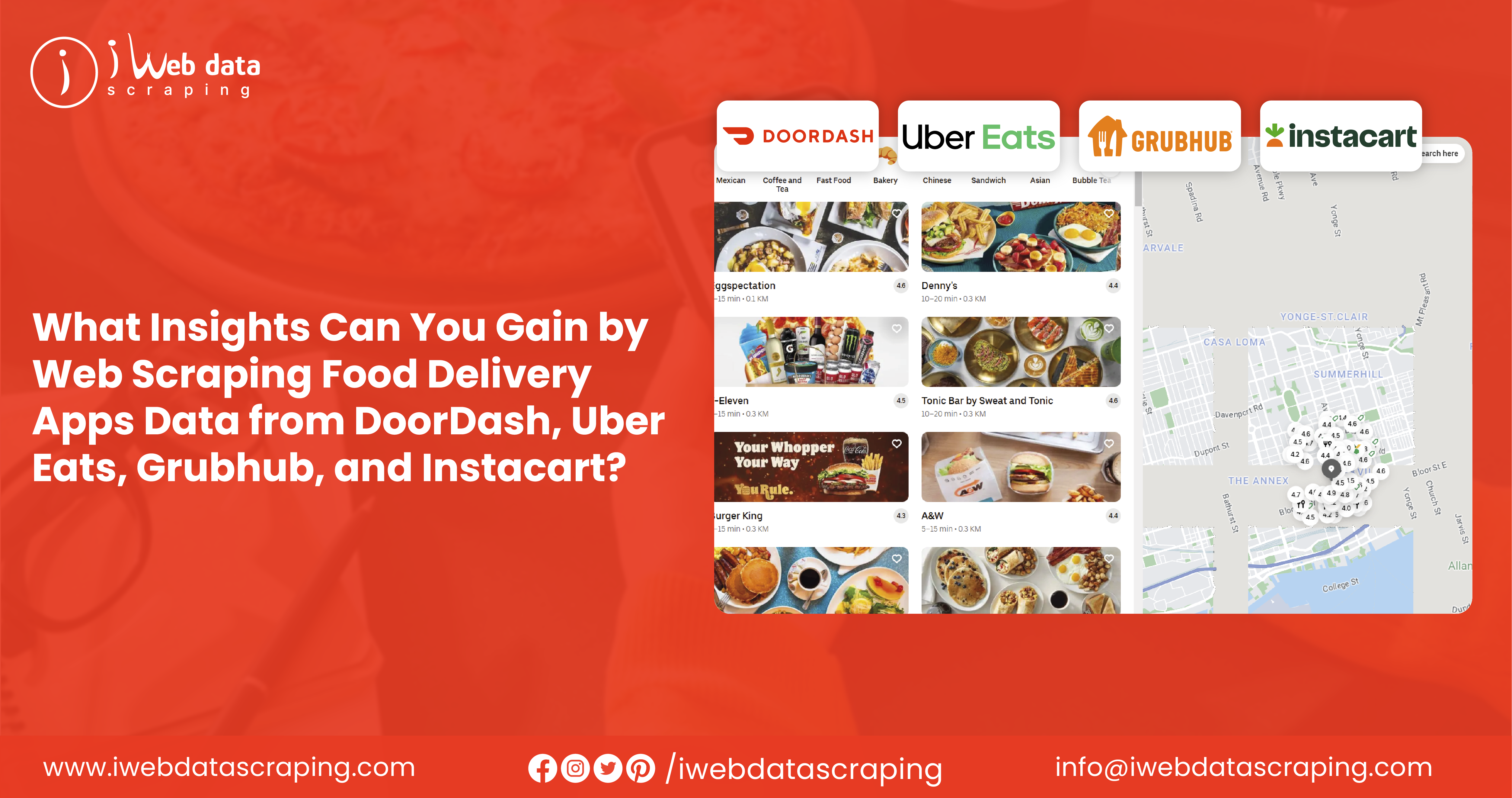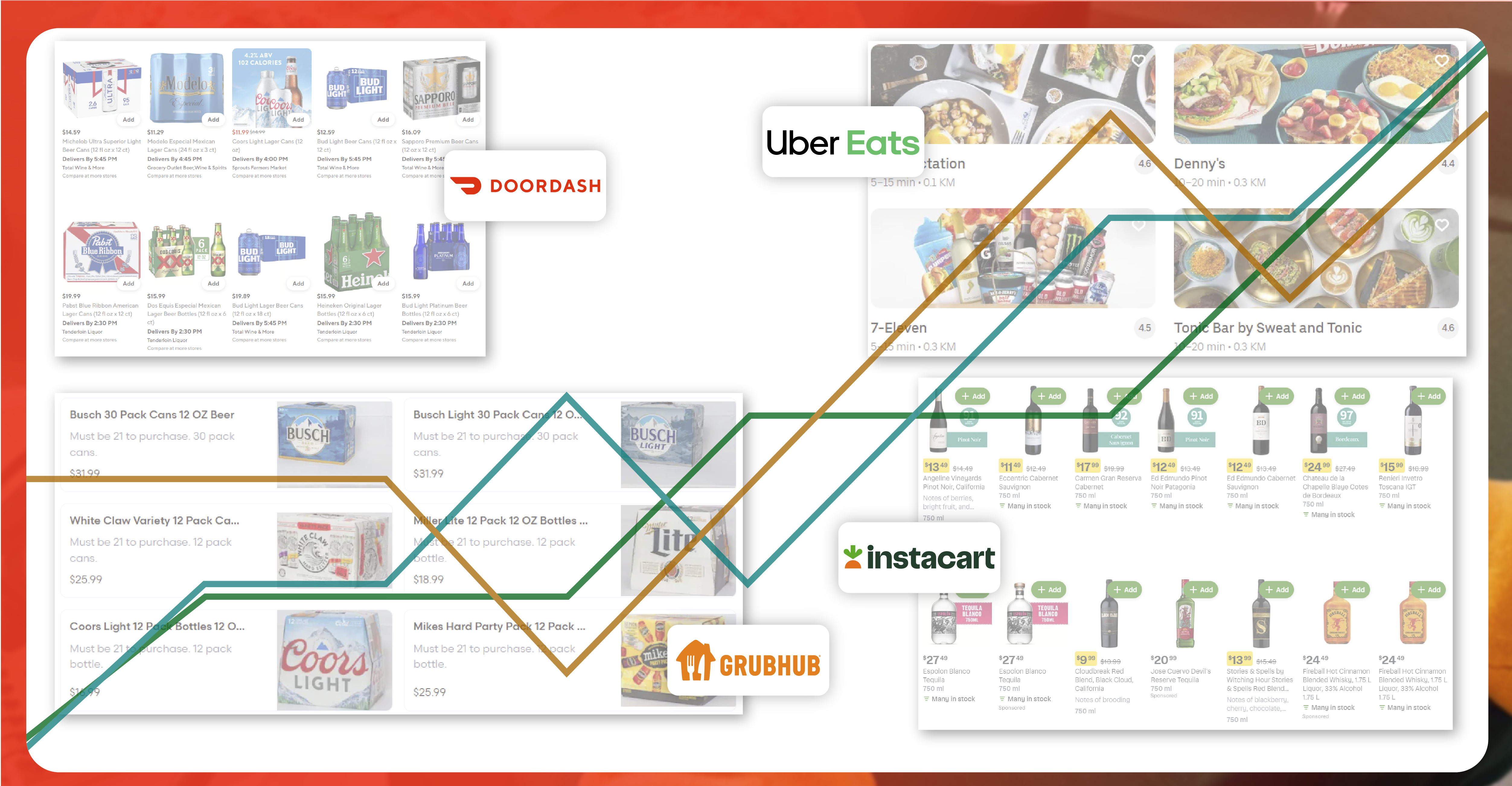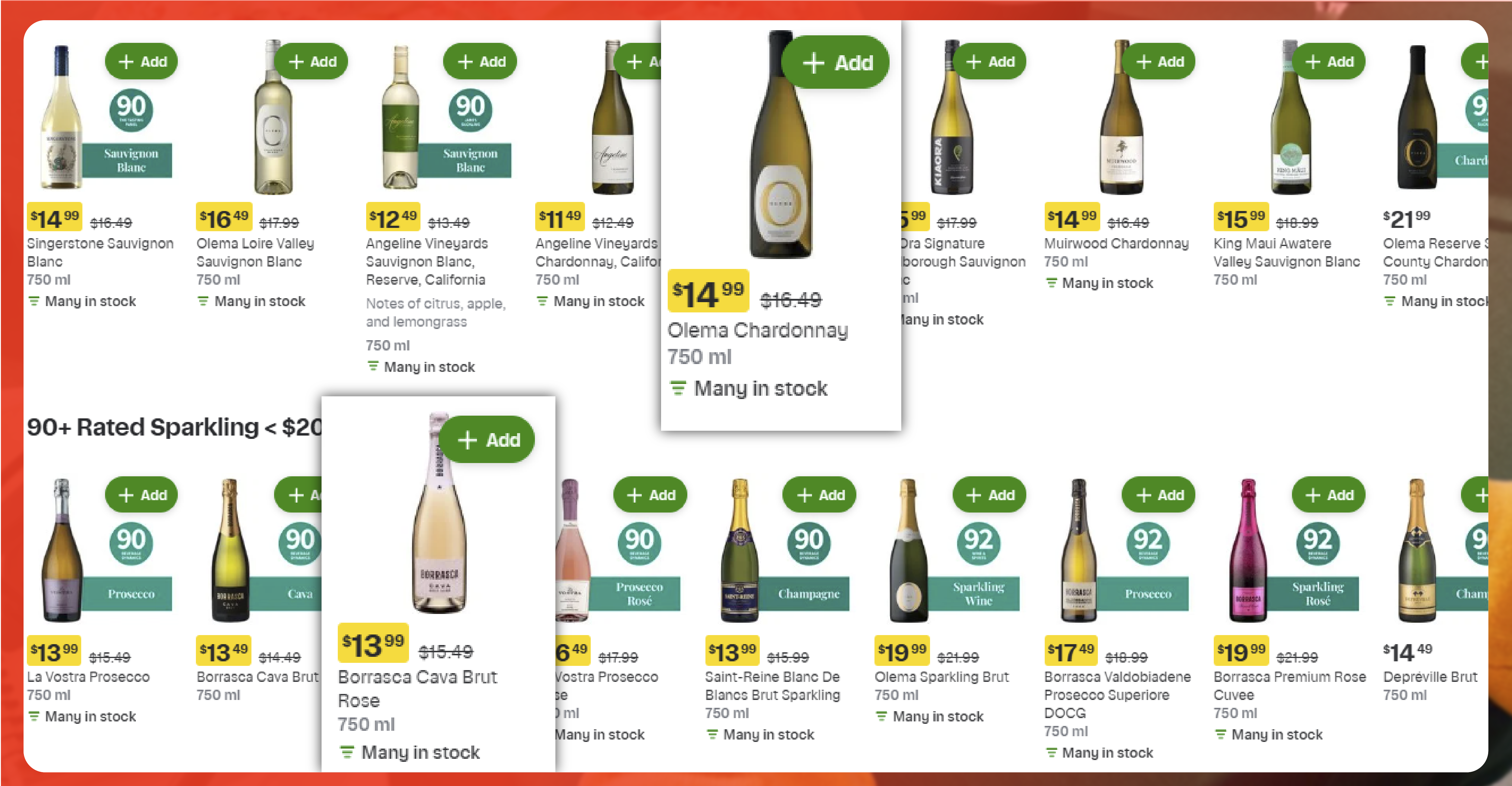

In the rapidly evolving landscape of food delivery services, platforms like DoorDash, Uber Eats, Grubhub, and Instacart have transformed how consumers access meals and groceries. These services provide convenience and generate a wealth of data that reflects historical food trends. Businesses can gain crucial insights into changing culinary preferences and consumer behaviors by leveraging techniques to extract historical food trends from DoorDash, Uber Eats, Grubhub, and Instacart. The analysis of this data allows companies to stay ahead of emerging food trends, optimize their offerings, and enhance customer engagement. Additionally, employing web scraping food delivery apps data from DoorDash, Uber Eats, Grubhub, and Instacart enables businesses to gather relevant information effectively, ensuring they adapt to the dynamic food delivery market. Understanding these trends is vital for businesses and consumers in a competitive environment.

Historical food trends offer a window into the culinary landscape over time, allowing businesses to understand consumer preferences and adapt their offerings accordingly. By examining trends in food choices, delivery frequencies, and popular cuisines, businesses can identify which products resonate with their customers and forecast future demands. For instance, during the COVID-19 pandemic, there was a marked shift towards comfort foods, such as pizza and burgers, as people sought solace in familiar flavors. Conversely, as the world began to reopen, there was a notable increase in the demand for healthier options, such as salads and plant-based meals. Understanding these shifts allows restaurants and grocery stores to adapt their menus and stock, catering to changing consumer preferences. Techniques to extract historical food delivery app trends data enable companies to gather these insights, while web scraping food delivery app data helps ensure they stay ahead of emerging trends.
DoorDash: A Closer Look
DoorDash has emerged as one of the leading food delivery services in the United States, known for its extensive network of local restaurants and quick delivery options. By analyzing data from DoorDash, businesses can track historical trends, such as which types of cuisine are growing in popularity and when certain foods are in demand. For example, data analysis might reveal that sushi orders spike during summer, coinciding with increased social gatherings and outdoor activities. Examining peak ordering times can help restaurants optimize staffing and inventory management, ensuring they are prepared to meet consumer demand. Moreover, DoorDash's acquisition of Caviar, a premium food delivery service, allows one to explore high-end dining trends. Analyzing historical data from both platforms could uncover insights into consumer preferences for upscale dining experiences versus casual takeout options. Businesses can also scrape DoorDash food delivery app data to enhance their analysis.
Uber Eats: Trends in Global Cuisine
Uber Eats has a strong presence in the U.S. and internationally, allowing for a broader analysis of food trends across different regions. Extract Uber Eats food delivery app data to gain insights into the growing popularity of global cuisines, such as Indian, Korean, or Mediterranean. For instance, the rise of food fusion, combining traditional cuisines to create innovative dishes, has gained momentum. By examining orders over time, companies can identify which fusion dishes are trending and whether these trends vary by geographic location. Such insights can drive menu innovation, allowing restaurants to experiment with new flavors and combinations that align with consumer interests. Additionally, Uber Eats often runs promotional campaigns or partnerships with food influencers and chefs. By analyzing the impact of these initiatives on order volumes, businesses can evaluate the effectiveness of marketing strategies and adapt their promotional efforts accordingly.
Grubhub: The Influence of Promotions and Discounts
Grubhub's extensive data set provides valuable insights into consumer behavior, particularly regarding the influence of promotions and discounts on food orders. Grubhub food delivery app data scraping can assess how different marketing strategies affect ordering patterns. For example, data may reveal that specific promotions lead to significant spikes in orders during particular times of the week or month. By analyzing this information, restaurants can optimize their marketing efforts to align with consumer habits, offering promotions that cater to peak ordering times. Moreover, Grubhub's partnerships with various restaurants allow for analyzing menu item performance. By identifying which dishes consistently rank as bestsellers, restaurants can focus on enhancing these offerings while experimenting with new items based on consumer feedback.
Instacart: Shifts in Grocery Shopping Trends
While DoorDash, Uber Eats, and Grubhub focus primarily on restaurant food delivery, Instacart specializes in grocery delivery. The platform provides insights into how grocery shopping habits have evolved, particularly in the wake of the pandemic. By analyzing historical data from Instacart, businesses can identify trends in grocery purchases, such as an increased demand for organic and locally sourced products. This shift indicates a growing consumer preference for health-conscious options and sustainability in food sourcing. Retailers can leverage this data to adjust their inventory, focusing on products that align with current consumer interests.
Furthermore, Instacart's data can reveal seasonal trends in grocery shopping, such as increased sales of grilling items in the summer or baking supplies during the winter holidays. Understanding these trends allows grocery stores to tailor their marketing campaigns and promotions, ultimately driving sales. Companies can use web scraping Instacart food delivery app data to gather these valuable insights effectively.
Insights from Data Extraction

Extracting historical food trends from these platforms offers several key insights that can benefit both businesses and consumers.
1. Menu Optimization: Restaurants can refine their menus based on consumer preferences, focusing on high-demand items and experimenting with innovative offerings that align with emerging trends.
2. Supply Chain Management: By understanding seasonal trends and peak ordering times, businesses can optimize their supply chains to ensure they have the proper inventory, minimize waste, and maximize profits.
3. Marketing Strategies: Data analysis helps companies tailor their marketing efforts to align with consumer habits, leveraging promotions during peak ordering times to drive sales.
4. Consumer Preferences: Analyzing historical trends can provide insights into changing consumer preferences, allowing businesses to adapt their offerings and cater to evolving tastes.
5. Sustainability Initiatives: With a growing emphasis on sustainability, data analysis can help companies identify consumer preferences for eco-friendly products, enabling them to adopt more sustainable practices in sourcing and packaging.
In an era where consumer preferences constantly evolve, extracting historical food trends from platforms like DoorDash, Uber Eats, Grubhub, and Instacart is essential for businesses aiming to stay competitive in the food delivery market. By analyzing this data, companies can make informed decisions that align with consumer interests, optimize their offerings, and enhance their marketing strategies. As the industry grows, leveraging historical trends will be crucial for understanding the future of food delivery and grocery shopping. Utilizing food delivery app datasets allows businesses to gain valuable insights into purchasing patterns while employing a food delivery app data scraper, ensuring efficient data extraction for analysis. Additionally, data collection for food delivery app store locations can provide crucial information about market saturation and customer demographics. Through data-driven insights, businesses can navigate the complexities of consumer behavior, ultimately leading to tremendous success in an ever-changing market.
Experience top-notch web scraping service and mobile app scraping solutions with iWeb Data Scraping. Our skilled team excels in extracting various data sets, including retail store locations and beyond. Connect with us today to learn how our customized services can address your unique project needs, delivering the highest efficiency and dependability for all your data requirements.